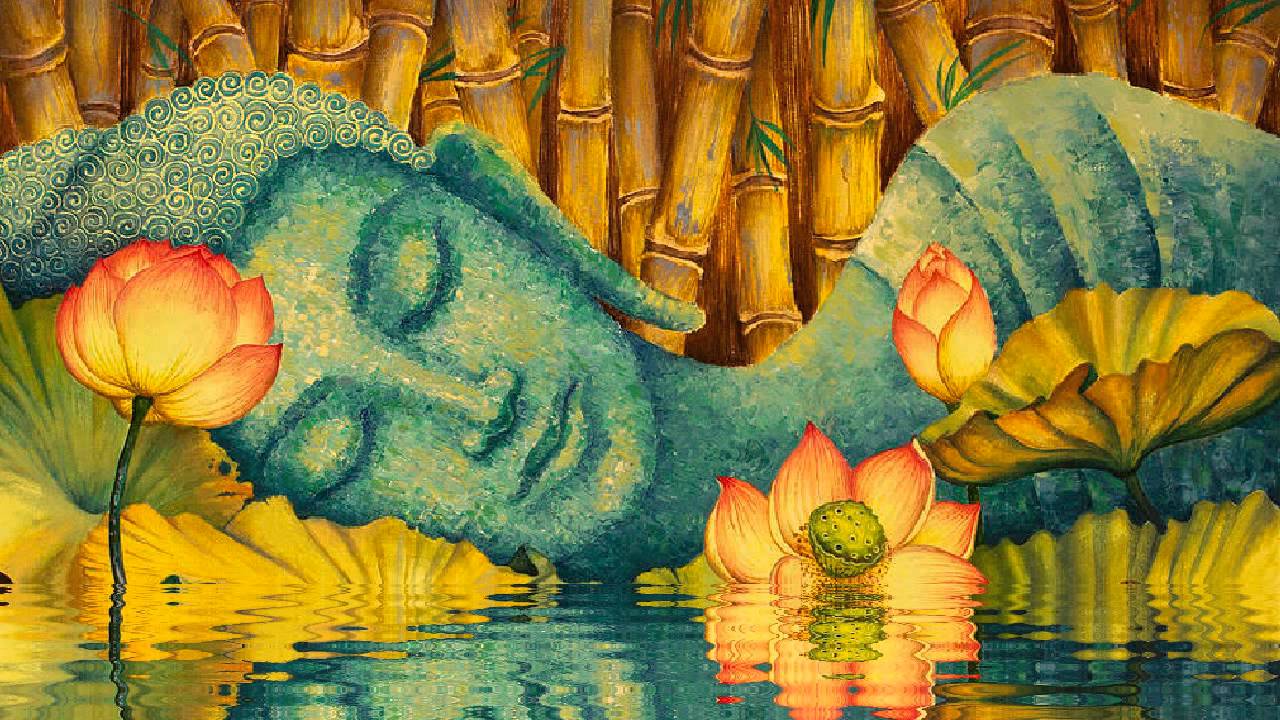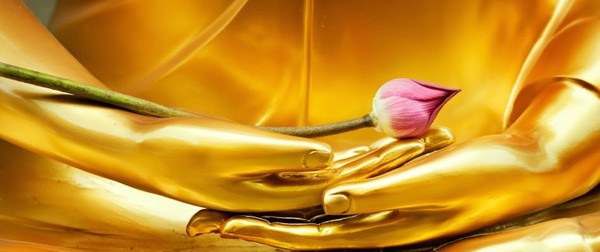
Buddhism Basics
What do Buddhists believe?
Buddhists have lots of differing beliefs and practices, but there are a few shared principles; these are the fundamental discoveries the Buddha made. Thich Nhat Hanh describes them this way: impermanence, (everything is always changing), no self (nothing has a solid core or soul), and nirvana (peace is freedom from fixed concepts). These are known as the “three marks of existence.” (Read a teaching on the three marks by Sylvia Boorstein here.)
Dzongsar Khyentse Rinpoche describes these truths in, alternatively, four points, known as “the four seals.”
Is Buddhism a Religion?
It depends who you ask, and it depends on your definition of “religion,” too. For example, we’ve asked three leading Buddhist thinkers the same question, and they had three different responses. Scholar Charles Prebish answered Yes. Tibetan Buddhist teacher Dzogchen Ponlop Rinpoche answered No. And Zen teacher Joan Sutherland answered Kind of. You can read their full responses here. The most important answer, of course, is your own — and therefore you might take solace in the fact that whatever your view — religion, psychology, a way of life — if it works for you, you’re right.
So it’s okay if I’m not religious?
Absolutely. Many people — particularly those who consider themselves “Spiritual But Not Religious” — have found that Buddhist thought and practice enhances and works well within in their lives. Our Editor-in-Chief Melvin McLeod has enumerated the reasons why in his very popular article, “Are You Spiritual But Not Religious? 10 Reasons Why Buddhism Will Enrich Your Path.”
Is there an eternal soul in Buddhism? What’s behind the concept of rebirth?
As Narayan Helen Liebenson explains, “Anatta (not-self) is a central teaching of the Buddha, as is rebirth. How do we put these seemingly contradictory teachings together? The Buddha taught that freedom from samsara, the repetitive round of birth and death, is possible through the understanding of not-self—that nothing whatsoever can be clung to as me or mine. So it could be said that rebirth affects those who cling to a sense of self but ends for those who release such clinging. As for what is reborn, the Buddha didn’t answer this question. All of the teachings guide us toward the ending of suffering; the Buddha seems to have been more interested in helping living beings find their way out of bondage than in theories.” For more on this subject, read the rest of Liebenson’s comment, along with related comments from Tenzin Wangyal Rinpoche and Zenkei Blanche Hartman, here.
What is “dharma”?
As Reginald Ray has written, “The Sanskrit word ‘dharma’ is without doubt the most important and most commonly used term in Buddhism. Among the three jewels of buddha, dharma and sangha in which all Buddhists take refuge, the dharma is pre-eminent.” In one sense, Ray explains, it is “the underlying, substratum of reality-of our lives and of our world. It is the ultimate and primordial fact of who and what we are.” In a second sense, dharma is phenomena, it “is what is so in our lives, whether we like it or not, whether we wish for it or not, whether we expect it or not.” In its third and fourth senses, dharma is considered to be the the Buddhist path itself and, most specifically, the Buddhist teachings that lead us along the path.
How does one become a Buddhist?
If you accept the above principles, you can make a formal commitment to Buddhism in a ceremony called “taking refuge.” Because nirvana means giving up ego’s futile search for refuge impermanence and no self, the twist is that you’re taking refuge in not seeking a refuge. If you can do that, you’re really a Buddhist. Click here to read more about taking refuge.
What if I don’t have a teacher or community to study with?
“For the independent practitioner,” writes Judy Lief, “there is no clear roadmap. The sheer volume of material to study can be overwhelming, and so can figuring out where to start. So it is probably best to begin at the beginning—with yourself.” Read her advice on doing just that in “Buddhist Teachings: Where to Start When Going It Alone.”
Buddhist meditation
How can I get started with basic meditation?
Focusing on the in-breath and out-breath is a core technique, practiced by beginning and established meditators alike, to deepen concentration and cultivate meditative insight. Click here for incredibly simple, doable meditation instruction.
But: why should I meditate?
As Chögyam Trungpa Rinpoche writes, “the point of meditation practice is actually to rediscover our hidden neurosis and our hidden sanity at the same time,” as well as to develop a sense of discipline in our lives. Its practice, Rinpoche says, is composed of three elements: “working with yourself, working with the phenomenal world, and working with the warmth that develops. You begin to take a liking to your frustration, pain, and boredom. Everything is part of your world.
How much should I meditate?
As Joeseph Goldstein has said about meditating, “Something quite extraordinary can happen in even five minutes.” His colleague Sharon Salzberg concurs, explaining: “Usually when people start sitting, we say that five minutes is enough. You don’t have to think, ‘I’ve got to sit here for six hours.’ You don’t have to get into some pretzel-like posture and suffer!”
Do I need to buy anything special to get started with meditating?
You might well find that you’ll want a dedicated meditation cushion (known as a zafu) and other accessories to support you in your practice. You may also want to create a dedicated spot for meditation in your home, for example. But as Buddhist teacher Judy Lief says, even “if you are going it alone, you have the resources you need.
What is “walking meditation,” and how do I do it?
“Walking meditation,” the Vietnamese Zen master Thich Nhat Hanh writes, “unites our body and our mind. We combine our breathing with our steps. When we breathe in, we may take two or three steps. When we breathe out, we may take three, four, or five steps. We pay attention to what is comfortable for our body.” Click here for easy-to-follow walking meditation guidance.
What about running? Can that be a form of meditation?
“Running,” writes meditation teacher and long-distance runner Sakyong Mipham, “is a natural form of exercise, for it is simply an extension of walking… Likewise, meditation is a natural exercise of the mind — an opportunity to strengthen, reinvigorate, and cleanse.”
What should I do with my eyes when meditating?
In some schools of Buddhism, you meditate with your eyes open and in others you keep them closed. If your eyes are open, what you do with them depends on the kind of meditation you’re doing.
There are so many different terms for different kinds of meditation. How can I understand these?
There are nuances in the way different schools approach it, but basic Buddhist meditation comes down to two fundamental practices: concentration and insight. These are also called mindfulness and awareness. Many of the terms you have likely heard — shamatha, vipassana, zazen, vipashyana, mindfulness, awareness, calm abiding, insight, and so on — are names for one or both of these practices. Buddhist practice always starts with meditations that calm and concentrate the mind; what often follows is insight, Buddhism’s unique specialty. With the stable, focused, and fully present mind you have developed in your mindfulness practice, you can begin to investigate the nature of reality.

Source




